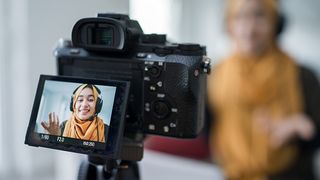If you ask a professional or any camera expert about which is the best camera for video, you'll probably get a different answer every time. It all comes down to what you want to use it for. The best camera for streaming won't be the same as a camera you'd choose for shooting a movie, your next vacation, or for launching your career as an influencer!
This guide is for anyone just starting out in video that doesn't know what camera to get. If you already know what you're looking for, you can jump straight to our dedicated buying guides to the best camcorders, the best cameras for filmmaking, the best action cameras, and more.
Here at Digital Camera World we've tested and reviewed a huge range of camera types and price points. We will walk you through all the options available, whether it's a camera phone, DSLR, mirrorless camera, or one of the best cinema cameras – and tell you our favorites. They all shoot video in completely different ways and some are much better all-rounders than others, so if you want to take pictures too it's worth keeping that in mind.
Video doesn't have to be difficult, so don't be put off by all the accessories, technical terms, or complex-sounding techniques. Remember, your first project doesn't have to be a masterpiece, the more you do, the more you'll learn.
Let’s help you find the best camera for video in 2023.
Best camera for video: our top picks
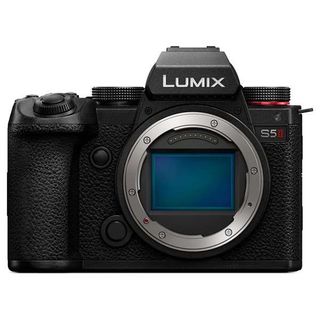
Best video camera overall
Mirrorless cameras are the most popular choice for serious video shooting – offering you an interchangeable lens system that means you can pick the right lens for what you are shooting.
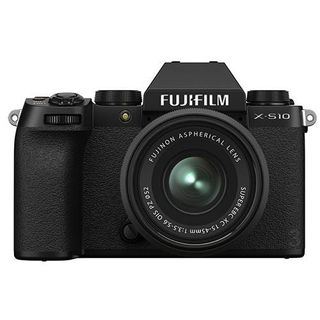
Great for stills and video
Vlogging is definitely the New Big Thing in video, and it’s now wildly popular amongst a new generation of photographers and videographers – the current buzzword is ‘independent content creators, and the most talented and successful of these have become household names among their fans.
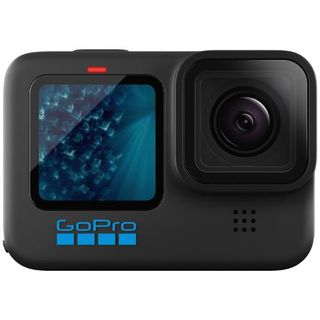
Best for action & TikTok
Action cams are one of the simplest ways to get into video. There’s almost nothing to know. Apart from a handful of basic settings for the video resolution and frame rate, you just press a button to record and press it again to stop.
Best camera for video in 2023
Why you can trust Digital Camera World Our expert reviewers spend hours testing and comparing products and services so you can choose the best for you. Find out how we test.
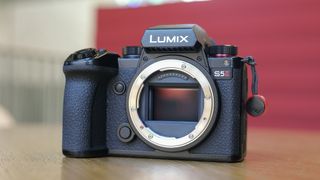

Mirrorless cameras are the most popular choice for serious video shooting – offering you an interchangeable lens system that means you can pick the right lens for what you are shooting.
The Panasonic Lumix S5 II is our top pick for videographers - but its full-frame sensor make it a great camera for shooting stills too. It builds on the original Lumix S5’s tough compact frame, class-leading 5-axis in-body image stabilization, and excellent color science.
The most significant new addition is a Phase Hybrid autofocus system that combines PDAF with Contrast Detect AF to provide 779-area metering. This means it's better at detecting and tracking subjects, especially in low light and backlit scenarios.
The Lumix S5 II gives you truly unlimited 4K/60p 4:2:2 10-bit recording internally, S&Q 4K/60p (a high-speed 60fps) and FHD/180p, as well as up to 6K, full sensor readout video recording, making it a highly versatile camera for content production. And at $2500/£2000, we think the Lumix S5 II is astonishingly good value for money.
Read our full Panasonic Lumix S5 II review for more details
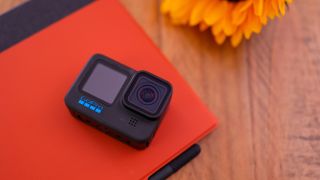
Action cams are one of the simplest ways to get into video. There’s almost nothing to know. Apart from a handful of basic settings for the video resolution and frame rate, you just press a button to record and press it again to stop. What action cams lack in finesse they make up for in immediacy, impact, and their bulletproof go-anywhere attitude – and one name stands above all the others: GoPro.
Though launched without much fanfare and looking identical to the Hero10 Black in almost every way, the Hero11 Black is nevertheless a significant upgrade. That’s all down to its use of the all-new and improved image sensor that can capture versatile 8:7 content, stunning 5.3K video, and 27MP stills.
If you shoot a lot of slow motion, it can record at 240fps in 2.7K making it perfect for those smooth action shots. This is hands down the best GoPro on the market - but its fixed lens means it does not give you the range of angles of view of alternative video cameras.
Read our full GoPro Hero 11 Black review for more details
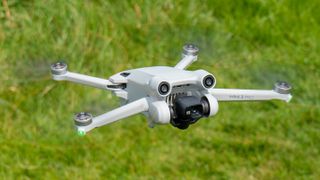
The DJI Mini 3 is one of the best sub-250g camera drones - and the first to come with collision sensors as found in some of the more expensive models - making it easier to fly than many of its rivals. We also love that it includes a new camera gimbal capable of turning to capture images in portrait orientation (handy for TikTok).
The New 'DJI RC' remote is also now available, allowing customers to use a screen rather than connecting via a photo. Choose from heavier batteries with longer fly time (although this will make the drone heavier) or stick to the classic batteries that ensure it weighs below that magic number.
With all the added benefits that come with the DJI Mini 3 Pro, it is considerably more expensive than previous models so if you're on a budget we suggest considering the DJI Mini 3, which offers stunning image and video quality but lacks sensors and pilot assist.
Read our full DJI Mini 3 Pro review for more details
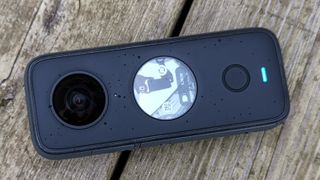
This is another variation of the action cam design that takes video into whole new areas. 360 cameras are essentially two 180-degree cameras fixed back to back that film simultaneously – and the camera merges both sets of images in real-time to produce seamless 36-degree ‘spherical’ footage. It’s amazing and disorientating at the same time. It doesn’t matter where you point the camera (!) because it captures everything around you.
Viewers can look around the full 360 scene in 360 viewers (YouTube can do this), or you can edit the video to produce a regular ‘flat’ movie where you can pan the camera and control where it’s pointing as you edit the movie. Our favorite right now for new users is the Insta360 One X2, which which we love is small enough to fit in a shirt pocket.
Read our full Insta360 ONE X2 review for more details
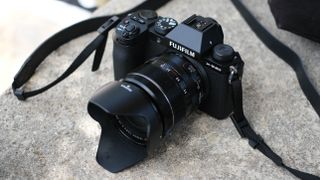
In our early verdict hands-on, I found that Fujifilm X-S20 is the perfect camera for most people, with its very straightforward controls, excellent fully automatic modes, it’s small and compact size, and its deceptively powerful processor capable of 6K video and subject recognition tracking, photo enthusiasts, content creators, and vloggers will find a lot to love.
The price is a little higher than the previous version, which might put some people off, although, for the cost, you are getting a considerably capable camera that is more than enough for most users’ needs.
Read our Fujifilm X-S20 review to find out more

You don't have to invest in a dedicated video camera to shoot great video. Like other flagship smartphones, the iPhone 14 Pro can shoot incredibly well-stabilized 4K video of a quality that's perfect for vlogging and even indie filmmaking.
And if you mostly shoot video for social media, a camera phone makes recording, uploading, and sharing content very efficiently. The iPhone 14 Pro is one of the best. There's a useful new macro mode, along with an improvement to low-light shooting with the ultra-wide camera.
New picture styles are worth experimenting with, while the Cinematic video mode is a clever feature and nice to have if you're a budding movie-maker. As for camera hardware, Apple has gone for a quadruple-lens setup on the iPhone 14 and iPhone 14 Pro Max which include a 48MP 24mm f/1.7 lens, and an ultra-wide 12MP 13mm f/1.78 lens, a 2x telephoto 48mm f/1.78 lens and finally a 12MP 3x telephoto 77mm f/2.8 lens.
Read our full Apple iPhone 14 Pro Max review | Best phones for video
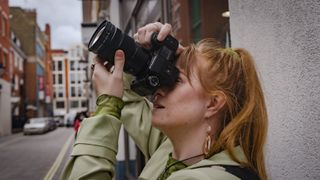
The Fujifilm X-H2S might be Fujifilm's most expensive X-series release yet but there is good reason for it. With a 26MP sensor, 4/6K video at 120fps, in-body stabilization, a vari-angle flip-out screen, and blackout-free shooting at 40fps, this is a mirrorless camera truly aimed at professionals.
Fujifilm has removed several of the external exposure control dials in favor of a digital screen as found on the Fujifilm X-H1 but doesn't let that deter you, it still very much feels like a Fujifilm camera with its high-quality finish, good size grip, and familiar button layout.
If you're after more resolution, the alternative Fujifilm X-H2 is identical to the X-H2S in terms of design but with a 40MP sensor and the ability to shoot 8K video (although you can't shoot as fast in burst mode).
Read our full Fujifilm X-H2S review for more details
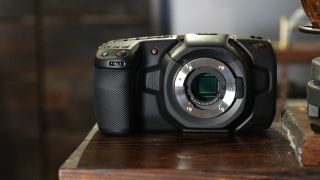
Vlogging is a perfectly respectable occupation, but if you create serious productions for clients and customers you may need to step up a gear with your equipment. Proper cinema cameras like this one are designed for video first and foremost, with video-specific features, controls, and connectors that regular cameras don't have. The good news is, it doesn't have to cost a fortune!
The Blackmagic Pocket Cinema 4K is a cine camera without the high price tag. It has a Micro Four Thirds sensor which means there are a huge number of Olympus, Panasonic, and third-party lenses available both brand new and secondhand.
It can shoot up to 4K 60p with no crop factor and has 13 stops of dynamic range. The one downside to the camera is it doesn't have a flip-out screen but if you're a serious filmmaker you'd probably want to invest in one of the best on-camera monitors anyway.
Read our full Blackmagic Pocket Cinema Camera 4K review for more details | Best cameras for filmmaking
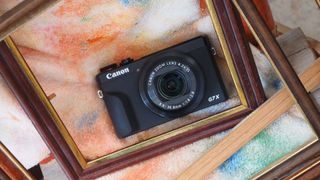
Streaming is a relatively new way to shoot and share video, but it's really catching on. 'Streaming', whether it's to Facebook or YouTube or some other video-sharing platform, is sharing video live, as you shoot it, whether that's out in the field or in front of your computer hooked up to a camera.
Streaming from a phone is the simplest solution, but if you want a proper camera, the PowerShot G7 X Mark III is ideal. It was also the first camera of its kind with a microphone input – vital if you want clean audio, not to mention the ability to Livestream straight to YouTube.
This means that even if you’ve got an expensive cinema camera if you also have a G7 X Mark III you can create a fuss-free live setup without any expensive capture cards and a PC.
With its flip-out screen, the G7 X III also gives vloggers a clear view of themselves when they shoot, and thanks to its 20.1MP 1-inch stacked CMOS sensor and DIGIC 8 processor it’s also able to capture great stills, so your custom thumbnails can pop nicely.
Read our full Canon PowerShot G7 X Mark III review for more details | Best cameras for streaming
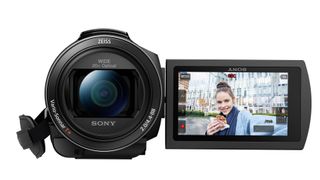
Once upon a time, camcorders were the go-to piece of kit if you wanted to shoot video. With a long zoom lens, a hand strap for ease of shooting, and a pop-out screen, they were perfect for recording video.
Well, don't worry, they haven't gone anywhere! While you can still buy amateur-orientated camcorders as you'd remember from the videotape days, there are also a lot of pro camcorders on the market that even have interchangeable lenses.
The traditional camcorder shape is still regarded by many pro videographers to be better for shoulder-mounted use and general handling. The FDR-AX43 is a great camcorder to start with.
It may be compact but it doesn’t skimp on features. Things we love about the AX43 include its 20x Zeiss optical zoom, 4K shooting (with super-down-sampling for 1080p displays), and a low noise Exmor R CMOS sensor.
Read more: Best camcorders
How we test the best video cameras
We test cameras both in real-world shooting scenarios and, for DSLRs and mirrorless cameras, in carefully controlled lab conditions. Our team of reviewers have tested hundreds of different cameras, of different types - and for us we are looking for great looking video footage, something that is designed well so that its features can be used easily, and something that offers good value compared to its rivals. Our lab tests measure resolution, dynamic range, and signal-to-noise ratio. Resolution is measured using ISO resolution charts, dynamic range is measured using DxO Analyzer test equipment and DxO Analyzer is also used for noise analysis across the camera's ISO range. We use both real-world testing and lab results to inform our comments in buying guides.
Frequently asked questions
Do I need 4K video?
All of the video cameras in this guide can shoot 4K video - and some can even shoot video in even higher resolution. 4K is a measurement of the maximum detail that can recorded - very roughly 4000 dots across (but usually slightly less). As many people play back footage on screens with lower resolutions, 4K is not essential. However, the higher the resolution, the more scope you have to crop the image during editing – and it is also a useful to help future-proof you for the ever-improving quality of screens. A 6K camera can shoot video with a horizontal resolution of approaching 6000 pixels. All cameras also allow you to record at a lower resolution - such as 1080P or 2K (which gives you a resolution of 1920x1080 pixels) - to allow you to achieve smaller file sizes, or allow you to use faster frame rates (for slow-motion effects).
Are DSLRs good at shooting video?
All recent DSLR cameras can shoot video - and the best SLRs for videos can do this well. But the design of DSLRs means that more modern mirrorless cameras are better adapted to shooting video, making these the obvious choice over DSLRs for anyone starting out. DSLRs and mirrorless cameras both allow you to change lenses - so you can choose your lens to shoot your subject. But this does mean that the lens is a separate purchase - which can easily cost as much as the camera body itself.
Isn't my phone good enough to shoot video?
Recent phones can shoot video to a very high standard - and some people even use them professionally. However, the size and shape of phones does not make them particularly easy to use for serious videomaking. They also provide fewer lens options than mirrorless cameras with their interchangeable lenses - or camcorders with their big built-in zooms.
You might also like the best laptops for video editing and the best video editing monitor. These are the best video tripods.
